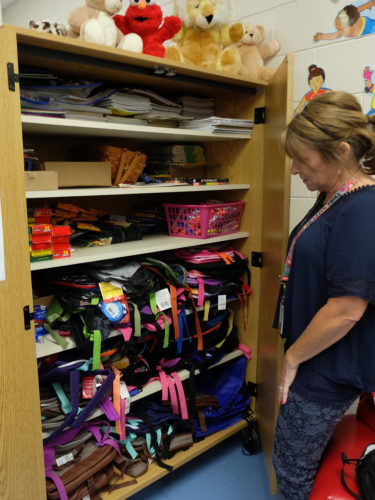When International Student Exchange (ISE) contacted me in the fall of 2016 and said that they had chosen Children Incorporated to be their domestic philanthropic partner for the coming year, I was pleasantly surprised. ISE is a high school exchange program that brings together people from around the world, fostering cross-cultural learning. Under the leadership of their Chief Executive Officer, Wayne Brewer, they have been positively impacting the lives of children worldwide for in excess of 35 years.

Mr. Carter with ISE representatives in Madrid, Spain
Mr. Brewer, along with Tal Stanecky, who serves as Senior Program Advisor at ISE, selected Children Incorporated from among many other organizations due to the transparency we exhibit, and the fact that such a high percentage of our funding is used to benefit children and families. “Children Incorporated was so appealing,” said Mr. Stanecky, “because of its ability to adapt and tailor its services to children all around the world. The donations being given to the charity were really going to the people who needed it the most.”
This past November, I traveled to Madrid, Spain as a guest of ISE, and while there, I met many of the wonderful people who make up that special organization. I met and interacted not only with directors and board members, but also with representatives and field workers – those who toil within small towns and large cities across America to find host families for exchange students who wish to come to the United States and learn more about our social, economic, and political systems.
Over a five-day period, I shared many warm conversations and lots of laughter with these incredible people, and I returned to the United States with a true sense of awe and appreciation not only for the people of ISE, but also for the organization as whole.
Donations already at work
“The donations being given to the charity were really going to the people who needed it the most.”
While in Spain, International Student Exchange presented me with a very generous monetary contribution for Children Incorporated, with the very specific purpose of assisting us as we improve the lives of U.S. children over the coming months. Renée Kube, Director of our U.S. Programs Division, has been hard at work overseeing the first distributions of the ISE funds. Thus far, Children Incorporated has purchased laptop computers for a residential school in Huerfano, New Mexico; provided building supplies for an outdoor reading center in Pinon, Arizona; and obtained the necessary materials to lay an Americans with Disabilities Act-compliant sidewalk for wheelchair-bound students at a special education school in St. Michaels, Arizona.
Additionally, backpack feeding programs and monthly fresh foods markets have been funded in our nation’s capital of Washington, D.C. In the small community of Glade Creek, North Carolina, an after-school program based on cultural enrichment and music lessons for students is now a reality, in part thanks to funds received from ISE – and much more will be accomplished as the direct result of their kindness and generosity.
I wish to express my heartfelt gratitude to ISE for recognizing the life-changing work that Children Incorporated regularly accomplishes. Furthermore, I want to thank them for entrusting us with funds that will provide education, hope, and opportunity to many children and young people this year and in years to come, as our partnership continues. Children Incorporated is honored to be associated with a fine organization like ISE – and I, personally, am moved beyond measure.
From the heart,
Ronald H. Carter
President and Chief Executive Officer
Children Incorporated
***
HOW DO I SPONSOR A CHILD with children incorporated?
You can sponsor a child with Children Incorporated in one of three ways: call our office at 1-800-538-5381 and speak with one of our staff members, or email us at sponsorship@children-inc.org, or visit our website at the link below and search for an available child to sponsor.





